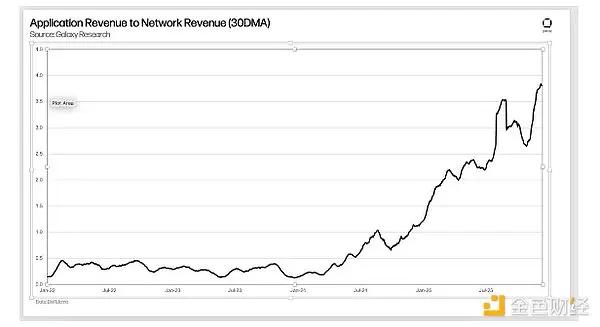Filecoin has been full of controversy since its birth in 2017. With the support of star teams and capital, and strong IPFS protocol technical support, this decentralized storage project has earned enough attention since its birth. Excessive expectations have overdrawn the potential of the project. In addition, 2022 The overall downward cycle of encryption eventually led to the extremely poor Token performance of FIL, which was dubbed a "death-level project" by everyone.
But in any case, Filecoin is worthy of recognition from the project itself. Today, the market value of Filecoin is still above 2 billion US dollars, ranking 27th in market value.
As a historical mission, it aims to build a global decentralized storage network ushered in a major upgrade. With the launch of the Filecoin Virtual Machine (FVM) on the mainnet on March 14, the enthusiasm for project development and market enthusiasm has once again expanded. Will the popularity of FVM launch be short-lived, or will it have a profound impact on Filecoin?
01
What is FVM
FVM (Filecoin Virtual Machine) is a virtual machine on the Filecoin network, and it is the runtime environment for smart contracts on the Filecoin network . FVM brings user programmability to Filecoin, unlocking the enormous potential of the open data economy. Smart contracts enable users to create and enforce rules for storing and accessing data on the network. FVM is responsible for executing these smart contracts and ensuring that they are executed correctly and securely.

Here are the following concepts to be distinguished, EVM , FEVM, FVM:
EVM ( Ethereum Virtual Machine) is an execution environment originally designed, built and run for the Ethereum blockchain.
The EVM is revolutionary because for the first time, arbitrary code can be deployed to and run on a blockchain. Here is a brief description. The virtual machine provides developers with an operating environment that is independent of the Mainnet but has complete system functions, which is convenient for testing and safe operation, and runs by converting the code developed by the developer into the code of the blockchain environment. , to facilitate the development of applications. For this point, you can refer to the popular science article on the platform "Popular Science | What is the EVM of the Ethereum Virtual Machine and what is it useful for?" " .
Filecoin EVM (FEVM) is the Ethereum Virtual Machine (EVM) virtualized as a runtime environment on top of the Filecoin Virtual Machine. It will allow developers to port any existing EVM-based smart contracts directly to FVM. FEVM is also fully compatible with any EVM development tool (such as Hardhat, Brownie, and Metamask), making it easy to deploy and interact with it.

FEVM allows current Web3 developers to quickly start writing on the Filecoin blockchain and still use all the tools, packages and languages they are used to, while also being able to access the Filecoin storage exchange natively.
FEVM is a crucial step in the final plan to achieve FVM.
02
Why introduce FVM?
1. The role of FVM on the Filecoin network
The release of the FVM virtual machine has consolidated Filecoin's position as the best L1 protocol for the open data economy.
Before FVM, the functions supported by Filecoin were very limited, and most of them revolved around storing data, because large-scale commercial applications could not be developed, and most of the stored data were computer-generated and useless data. And FVM = smart contract + provable storage, which can easily deploy applications and develop data economy.
As you can imagine, FVM seems to have opened the door to a new world for Filecoin. From 1 to 99, you can accumulate and improve step by step, but from 0 to 1 is a qualitative leap, completely reborn. Before FVM, like the previous Bitcoin , except for its own value storage function, the rest is relatively weak.
After the introduction of FVM, it has brought great programmability to filecoin, which can be compared to the birth of Ethereum. A platform that supports smart contracts can add almost all imaginable applications, and at the same time, the stored data based on filecoin can be calculated.
2. What does FVM bring to developers?

Because FVM brings smart contracts and provable storage to Filecoin, it directly opens up the space for developers to develop projects in these two areas.
With the introduction of smart contracts, developers can develop DeFi , GameFi , and NFT applications that are common in other public chains , and the ecology is expected to develop explosively; based on Filecoin's own data storage characteristics, more complex products that FVM ecology can build include but are not limited to:
-Data DAO
- Retrievability oracle / oracle-free access to data
-Permanent storage contract/storage endorsement
- Undercollateralized lending market for storage providers
- ETL pipeline (data integration pipeline that collects data from different data sources)
3. What does FVM bring to miners?
There are storage miners and retrieval miners in the filecoin project, and most of the FIL Token rewards are currently given to storage miners, that is, data storage service providers. In order to ensure the safe operation of the chain, miners have added a lot of complicated encapsulation processes when encapsulating data.
As a result, it is extremely difficult to store and retrieve valid data. With the intervention of FVM, it is hoped that this problem will be solved, and retrieval miners may bring in more income.
4. What potential changes does FVM bring to the current public chain structure?
At present, there are almost no practical and effective applications on Filecoin, and its TVL ranks at the bottom of the public chain. At present, the TVL is only $2,498,431, and the total lock-up amount of the entire network is $48.59 b, accounting for 1/10,000 of the total lock-up amount. Dapp The ecology is currently negligible, and the TVL of ETH accounts for nearly 60%.
With the introduction of FVM, the Dapp ecology is expected to lead to an order of magnitude growth, but in view of the low TPS of Filecoin itself, compared with other POS chains, it is difficult for Filecoin's Dapp ecology to have an advantage.
The more advantageous development is the data economy ecology based on verifiable storage. FVM has the potential to become the execution layer of Ethereum and store the data generated by Ethereum applications. And become the execution layer of multiple mainstream public chains, and become the infrastructure for multi-public chain ecological Cross-chain communication.



Source: defillama
03
What apps does FVM unlock?
1. Data DAO
DAOs (Decentralized Autonomous Organizations) are distributed entities whose ownership, governance, and decision-making process occurs transparently through on-chain activity.
Since the rights and interests in the data DAO can be tokenized, the value and utility of the data can be objectively expressed and exchanged in the market in exchange for performing or providing services on the data.
Stakeholders can in turn spend Tokens to incentivize the production of more raw data, such as sensor data collection, generative art, and even human tasks (transcription, translation...), thus forming a data-centric circular economy.
FVM makes it possible to implement all the ingredients for a data DAO to become a reality. The ground-breaking possibilities are enormous by creating composable layers that can be combined together to form different types of DAOs.
2. Permanent storage
For Filecoin participants, the responsibility for ensuring the liveliness of valuable data can be shared. Permissionless code running autonomously on-chain can guarantee storage persistence and updating, with no risk of modifying or changing the underlying dataset due to content addressing.
Funding mechanism and decision-making can be combined with Data DAO and Staking protocol to realize a one-time payment, permanent storage mechanism.

3. Financial Services
Staking protocols can use on-chain data points (e.g. address age, slashing history) to better assess risk and parameterize terms, while also allowing storage providers of all sizes to access funding.
Insurance agreements can help storage providers finance these upfront costs from contributors, or spread the risk of failure among the wider community. Contributors (or DAOs) can earn a revenue stream by purchasing the aforementioned exposure in exchange for recurring fees.
4. Decentralized Computing
Recombining highly dispersed data into a central location to compute it is expensive, inefficient, and wasteful. Instead, pushing computation to the edge and coordinating its execution is an entirely new possibility for FVM participants.
FVM participants can broker computing resources, incentivize computing execution, distribute workloads among available storage providers, and prove the validity of computing results to earn rewards.
Storage providers can register with the computing network through FVM participants. Compute clients publish jobs to participants. A mechanism would distribute work to providers, and once executed, providers would issue proofs to claim rewards.
5. Enable L2 networking
By deploying commitments or onboarding participants on FVM, layer 2 solutions can commit their state to the chain with verifiable proofs, distribute participant rewards, verify fraud proofs, and other tasks.
04
FVM Roadmap
Filecoin Virtual Machine (FVM) is an emerging project that is still being developed and perfected.
The M1 milestone upgrade achieved in 2022 represents the most significant transformation of the Filecoin network since its launch. Throughout 2023, the FVM virtual machine will gradually upgrade the protocol, continue to promote its programmability roadmap, and migrate system functions from proprietary space to user space. The result will be a lighter and more free Filecoin protocol.
The milestone plans for 2023 are as follows:
Milestone 2.2: Ability to deploy Wasm participants to Mainnet
Developers will be able to deploy custom smart contracts written in Rust, AssemblyScript, or Go and compiled to WASM bytecode. SDKs, tutorials, and other developer materials will be generally available. This milestone requires a network upgrade.
Milestone 3+: further incremental protocol refactoring to enhance programmability
A series of additional incremental protocol upgrades (in addition to nv17), moving system functionality from privileged space to user space. The result will be a lighter, less opinionated base Filecoin protocol where storage markets, exchange enactment, incentives, etc. are scalable, modular, and highly customizable through user-deployed actors. Development of enhanced programming features, such as user-supplied crons, asynchronous invocation patterns, etc., will begin at this stage.
In short, the development roadmap of FVM will be continuously improved and optimized to achieve more efficient, safer and richer functions. With the continuous development and improvement of FVM, the Filecoin network will become more complete and powerful.







